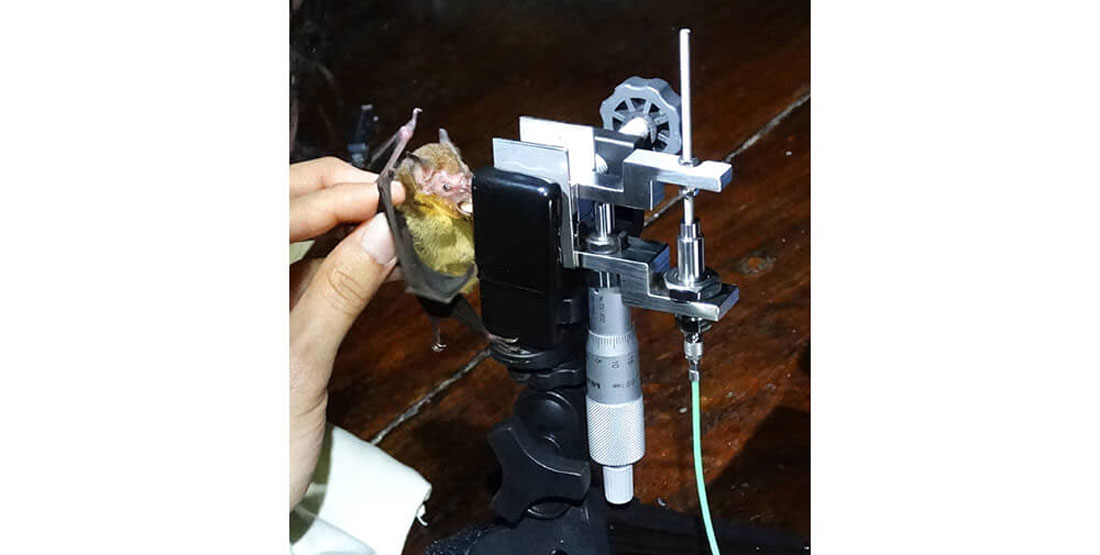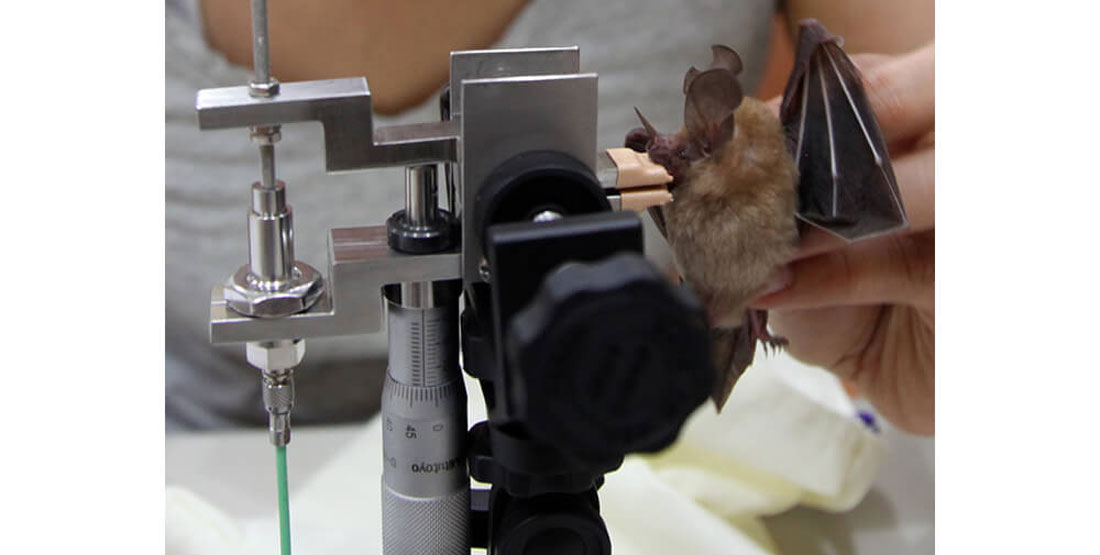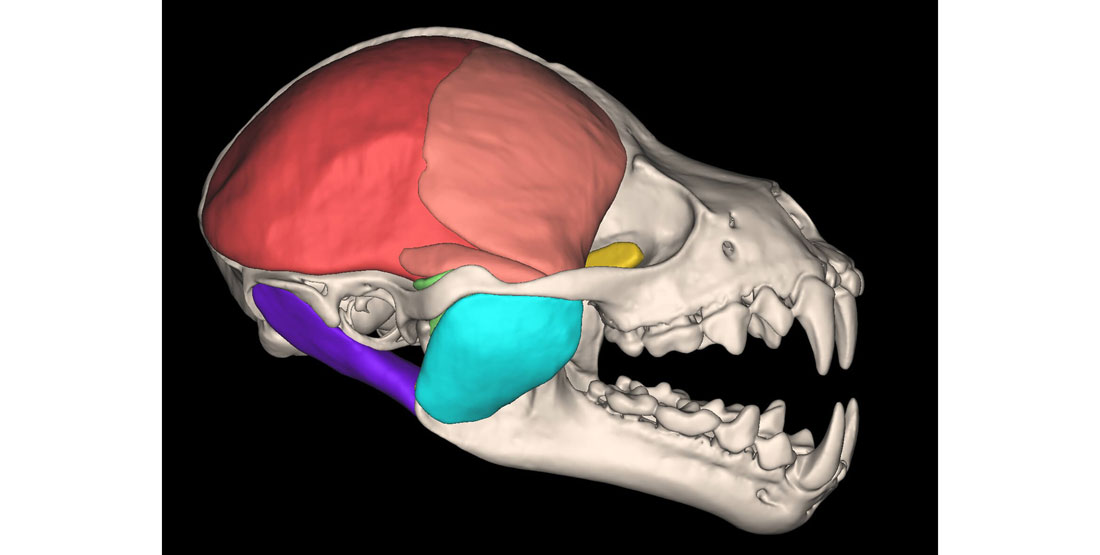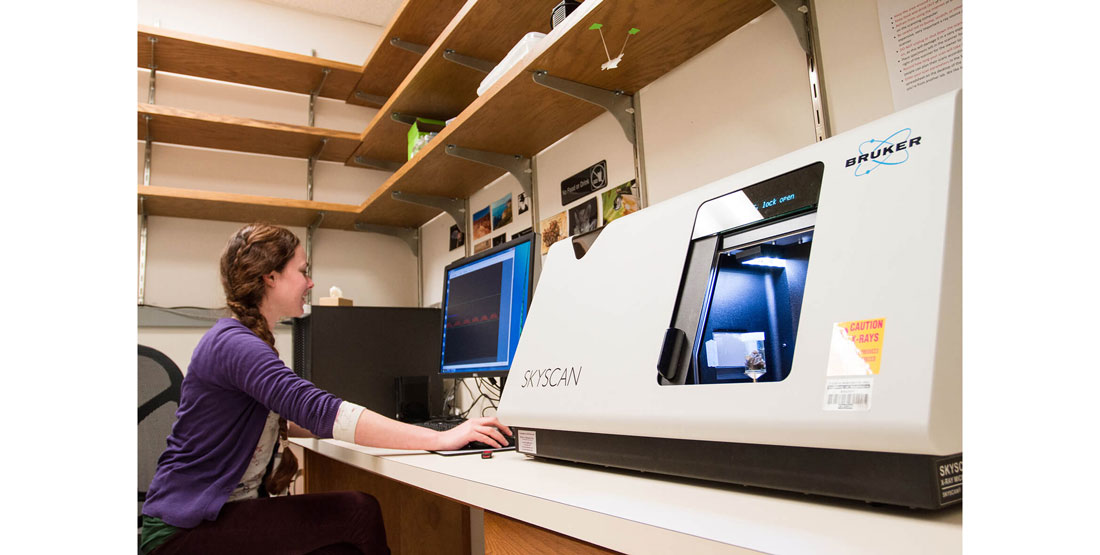
Force transducer setup used to measure the bite force of bats.

Force transducer setup used to measure the bite force of bats.
By gathering bite force information across many species and diets, we can go one step further and determine how evolution has shaped the anatomy of bat skulls and jaw muscles as they specialized on different diets. In other words, what about each bat species makes it have a strong or a weak bite? To answer this question, we create computer models of bat skulls and jaw muscles which allow us to first, visualize the anatomical differences across species in great detail, and second, tease apart how differences in each of the anatomical components of the bat head result in differences in bite force.
Creating these models requires some cutting-edge imaging technologies, including the use of micro-Computed Tomography to visualize the cranium and musculature. Through these models we have been able to determine, for example, that the temporalis (below) is the most important muscle in producing bite force, but there is a considerable anatomical variation in the rest of the jaw-closing muscles of bats.
We can further use these computer models to predict the bite force of specimens from our collections, including species that are rarely caught in the field, or even extinct species, and use these data to predict their diets.
By integrating field and computer methods in the study of bat bite force, we have helped understand how these mammals have adapted to consume such astonishingly diverse diets. With over 1,300 species of bats, however, there are still many bat bites to measure.



